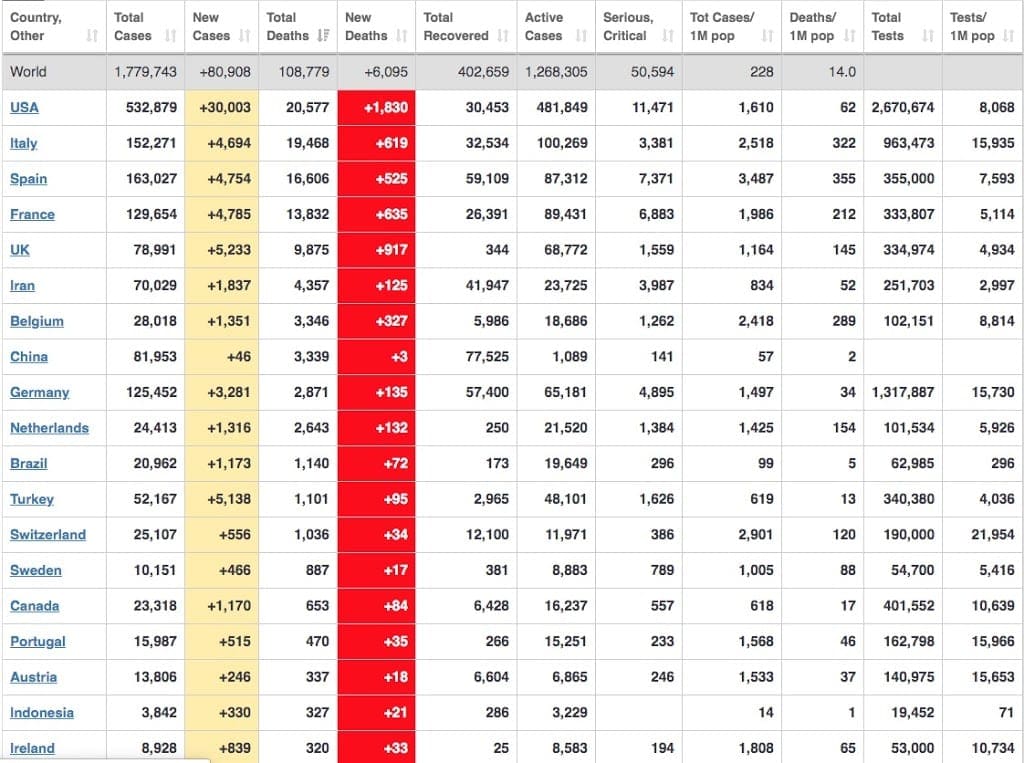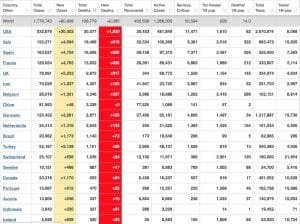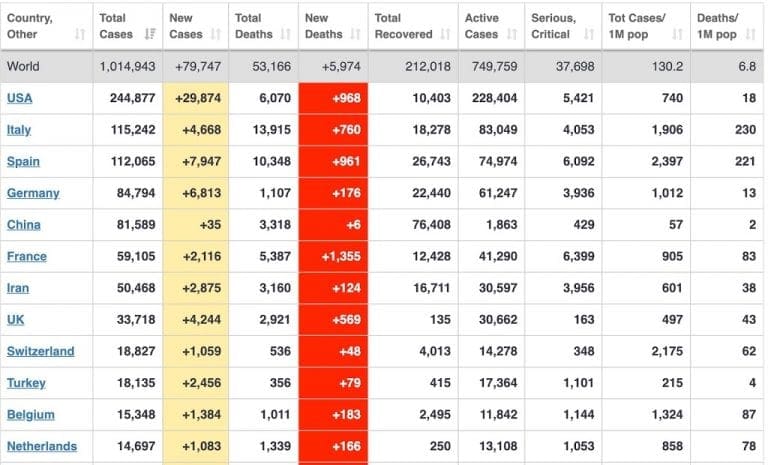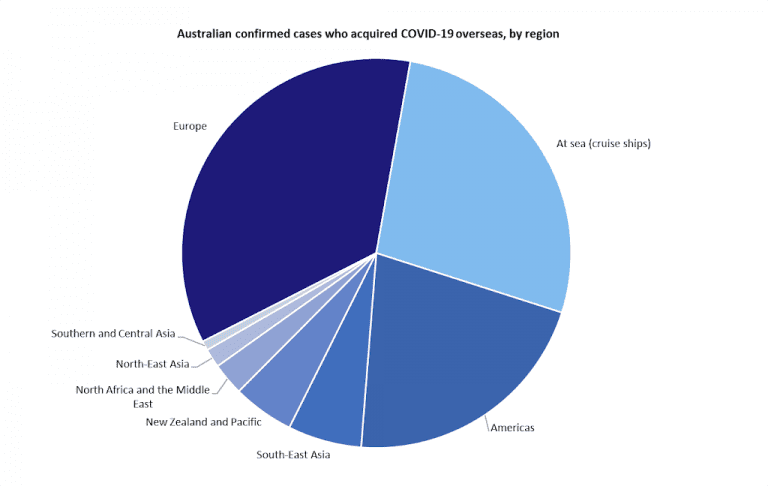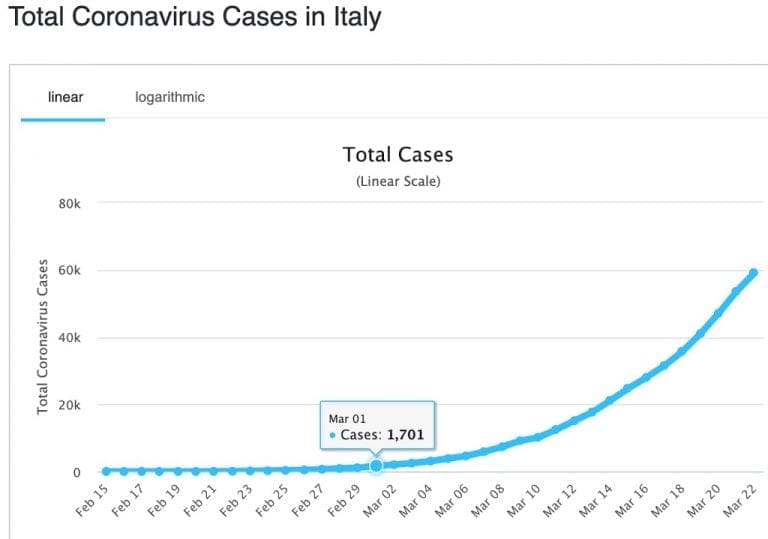COVID-19 Next steps
It looks as though Australia may have succeeded in escaping a worse outcome. We have declining numbers of new cases, new deaths, active cases, people classified as severe. It appears that we know where most new cases come from. The question everyone is asking is “How long should we stay locked down?”
I think it works a bit like this. We do not have immunity to this SARS-COV-2 virus, so most people who have any contact with it will catch it. Of those who have a severe infection (and if hospitals are overwhelmed) about 10% of them will die. (As has happened in Italy, Spain, France, Belgium, Netherlands, UK.)
About 95% of people who are infected show no symptoms. We can never find all of them. What we are trying to do with ‘social distancing’ is have the virus die out. Let us assume that the virus is infectious for 10-14 days. Let us also assume that any one person might have the virus. If keep people apart with ‘social distancing’, they cannot infect anyone else.
We plan to let the virus die on the carpet because it has no chance to infect anyone in the days it is alive.
Can we ease up now?
Most of us would be tempted to ease up. However… We have a couple of hidden problems.
- We don’t know the actual number of infected people. We have not done enough testing to find them all – especially not enough random testing. And large numbers could be infected and not showing symptoms – yet be infecting others who may get a severe infection and may die.
- We don’t have enough PPE (Personal Protection Equipment) to deal with big numbers flooding into our hospitals.
This interview with Brendan Murphy (Australia’s Chief Medical Officer) might shed some light.
What do we do now? Expect this
- We keep our locked borders between states for at least another 2 months (probably 6 months). All travellers between states/regions are quarantined for 14 days. Non-essential travel remains stopped.
- We keep our international borders closed until we have a vaccine. Any newcomers (returning Australians) are quarantined for 14 days.
- One of two strategies
- Zero case strategy. We keep random testing until there are no new cases. We wait 30 more days while actively looking for any new cases – random testing. When we have been 30 days without cases, we cautiously reopen more shops and businesses. If we have any new cases or deaths, we immediately slam the door again.
- A few cases strategy. We ease restrictions in the safest parts of each state – while keeping restrictions to protect the elderly and remote aboriginal communities. This path is the thin line between more normal activities and preventing people becoming infected. If we have new unexplained deaths, we immediately slam the door again.
Also
Bucket analogy
Think of the number of ICU beds or ventilators as bucket (with a little hole in it). New cases needing ICU beds are like water running into the bucket. When the inflow is small, the bucket does not fill quickly because the hole drains the recovered cases. If the flow gets too much the bucket fills and overflows. Overflows are deaths that never make it to the ICU – they are triaged away.
What about the rest of the world?
This does not look good. A few countries (eg, Italy, Spain, Denmark) do look as though they are past their peak and might now see a reduction in cases and deaths. USA and UK are ‘hoping’ that they are past their peaks, but I doubt it. It does look as though most countries need to go through the same process of ‘becoming overwhelmed, enforcing social distancing and restricting travel’ then 28 or so days later seeing a drop in deaths per day.
I’m not at all confident that African countries or most Asian countries will be able to implement the necessary laws or have hospital capability to deal with the coming wave of infected patients.
It does look as though many of the counties in the table below only break away from the exponential climbing death curve when they have spare space in ICU/ventilators. Most African and least developed of the Asian countries don’t have ventilators and very few ICUs. They will run the experiment for us of the need for such units.
Some good resources for you
- https://www.worldometers.info/coronavirus/ has the best set of stats for countries. (As a small aside, click the icon at top left on the screen to get this https://www.worldometers.info/
- https://covid19.healthdata.org/united-states-of-america This set of pages shows modeling forecasts of shortfalls in beds and ICU beds and needed ventilators. By default the first screen is USA. Other (European) countries are available by clicking on the Green button at top. No Australia unfortunately. It claims to be updated often but data lags by many days. Not as useful as promised.
- https://ourworldindata.org/covid-testing This shows testing for many countries. You can add Australia with the +Add country button.
- https://ourworldindata.org/coronavirus This shows a considerable whack of data worldwide on COVID-19. Scroll through the pix. Some of the interesting stuff is near the end.
Easter
I admit that I was not at all confident about how we would get through Easter. However, our Australian community has proven me wrong. By far most people have complied with government requests – albeit with a bit of enforcement. This should mean that we have not spread the virus too much during Easter.
Social, Political and Economic Change
- locking citizens in quarantine, restricting and monitoring citizens movement
- conservative governments handing out money to people for not working – in efforts to stop citizens starving.
- Moratoriums on rent and eviction.
- governments controlling products’ supply chains to ensure production of needed equipment. Looking more like ‘planned economies’.
- Social habits changed – people finding they don’t need to go to the shop, coffee shop, restaurant, gym. They can do all that at home.
- China’s rising power as it gets back on its feet. US’s sinking power while it deals with the chaos of its rising death toll. The US is likely to react badly to this shift of power.
- Dysfunctional (unstable) leadership in the US coupled with its electoral cycle. Where will this go? Is a shooting war a way for the US to solve its political issues?
What can we expect from here?
If we are through the worst of it, we will have fewer than 10 new deaths a day and fewer than 100 new cases. If that new case number gets higher than that, we don’t know where infected people are and we have unknown sources. If that happens, expect the lockdown the continue.
Australia keeps looking at the disasters in many countries and says ‘we don’t want to go there’.
If it goes well, and we keep to fewer than 10 deaths and 100 cases with no new sources, expect easing of the lockdown within a couple of months or so.
